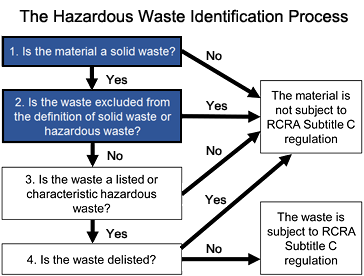Reclaim Waste Fundamentals Explained
Reclaim Waste Fundamentals Explained
Blog Article
How Reclaim Waste can Save You Time, Stress, and Money.
Table of ContentsNot known Facts About Reclaim WasteReclaim Waste for DummiesReclaim Waste - The FactsSome Known Facts About Reclaim Waste.Some Ideas on Reclaim Waste You Need To Know
Residential sewage waste refers to the waste and products from a household septic container. The proper administration and disposal of residential sewage waste need fluid waste to be transferred to a sewage treatment plant where the correct techniques and equipment are used to purify and dispose of waste.
Business waste often includes prospective hazards, such as combustible materials or a mix of liquid and strong waste items, and requires an advanced and detailed disposal procedure. The disposal of commercial waste typically entails the filtering of waste before transport to make certain risk-free and correct disposal. Hazardous waste is developed from byproducts and overflow of industrial procedures and manufacturing.
This kind of waste can not make use of the same sewage administration transportation or processes as septic or commercial fluids. The commercial waste monitoring procedure calls for the assessment and testing of fluid waste prior to it undergoes the disposal procedure (industrial wastewater treatment). Overflow waste is the fluid waste that originates from drainage and excess stormwater in very inhabited locations or cities
Runoff waste can trigger contamination and flooding otherwise taken care of effectively. Find out more concerning drain cleaning and waste management. Making sure correct waste monitoring can avoid calamities and reduce environmental damage. Both individuals in residential setups and specialists in business or manufacturing markets can profit from understanding the processes and policies of liquid waste monitoring.
See This Report about Reclaim Waste
Call PROS Solutions today to find out about our waste administration and disposal solutions and the proper methods to take care of the fluid waste you produce.
(https://www.anyflip.com/homepage/imqzz#About)Do you understand what takes place to your water when you disengage, flush the toilet or drain pipes the washing machine? No? Well, it's worth knowing. This supposed 'wastewater' is not just an essential source but, after therapy, will be launched to our land, rivers or the sea. Used water from commodes, showers, bathrooms, kitchen area sinks, laundries and commercial processes is called wastewater.

water utilized to cool equipment or tidy plant and equipment). Stormwater, a kind of wastewater, is runoff that flows from agricultural and metropolitan locations such as roofing systems, parks, yards, roadways, paths and gutters into stormwater drains, after rainfall. Stormwater moves neglected directly to neighborhood creeks or rivers, at some point reaching the ocean.
The Best Strategy To Use For Reclaim Waste
In Queensland, a lot of wastewater is treated at sewage therapy plants. Wastewater is transported from residential or industrial sites via a system of sewers and pump stations, known as sewerage reticulation, to a sewer treatment plant.
The Department of Natural Resources suggests city governments concerning managing, operating and maintaining sewerage systems and treatment plants. In unsewered locations, city governments might need owners to set up private or family sewer therapy systems to deal with residential wastewater from bathrooms, cooking areas, washrooms and laundries. The Division of Natural Resources authorizes making use of home systems when they are proven to be effective.
A lot of stormwater obtains no treatment. In some new communities, therapy of some stormwater to get rid of trash, sand and gravel has actually begun utilizing gross contaminant traps. Wastewater treatment takes place in four stages: Removes strong issue. Bigger solids, such as plastics and various other items mistakenly released to sewers, are removed when wastewater is travelled through screens.
Makes use of small living microorganisms understands as micro-organisms to damage down and get rid of staying liquified wastes and great bits. Micro-organisms and wastes are incorporated in the sludge.
Examine This Report on Reclaim Waste
Nutrient elimination is not offered in all sewer treatment plants due to the fact that it needs costly specialised devices. It is ending up being a lot more common in Queensland. Clear liquid effluent produced after treatment may still see this page include disease-causing micro-organisms. If this effluent is released right into rivers such as rivers or the sea, the micro-organisms will ultimately pass away out.

This usually implies wastewater needs to be treated or impurities removed before it can be released to rivers. Most wastewater moves into the sewerage system. Under the Act, neighborhood federal governments provide authorizations and permits for eco appropriate activities (ERAs) entailing wastewater launches that may have a neighborhood impact. The division provides approvals and permits to Periods entailing wastewater launches that could have a regional or statewide impact.
The Facts About Reclaim Waste Uncovered
Otherwise, examples are taken for laboratory evaluation. Commonly numerous tests are required to establish the levels of each of the various pollutants such as oils, hefty metals and chemicals in water. Tracking provides accurate details concerning water top quality and can confirm that permit conditions are being met. The details acquired with surveillance provides the basis for making water top quality choices.
Report this page